
I’ve been an enthusiastic thrift shopper for the better part of 30 years. It’s my entertainment, my therapy and a big part of what feeds my online resale business.
But successful thrift store shopping doesn’t happen by accident; you have to know what to do and what not to do.
Here are common thrift shopping mistakes to avoid.
1. Shopping for an immediate need
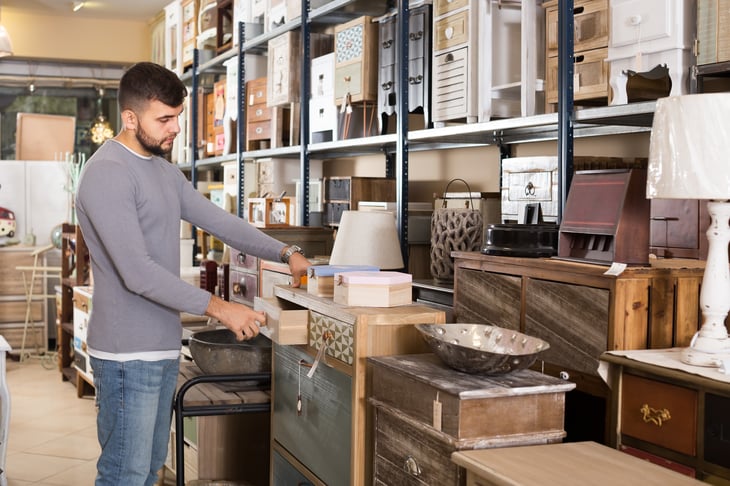
For all their benefits, thrift stores are the absolute worst places to shop for one thing: the thing you need right now. If you’re urgently in need of a specific item, it’s easy to drive yourself nuts trying to find it in a thrift store — the inventory is simply too unpredictable.
When time is the enemy, spend a few extra bucks to save your sanity. Hit the department store instead.
2. Shopping at the wrong times
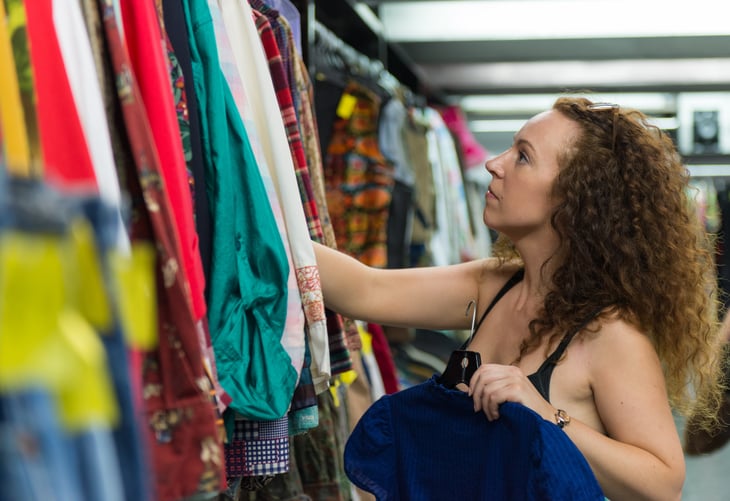
In my experience, there are only two bad times to go thrift store shopping: on weekends and during the two-week period before Halloween.
On weekends, inventory gets picked over quickly, and staff are usually too busy to process new items and restock shelves. During Halloween, costume shoppers turn most thrift stores upside down.
Seriously, in late October, you won’t find me within 500 yards of a secondhand store. I take a Halloween hiatus and gladly let the kids have their fun.
3. Being in a hurry

Having a solid shopping strategy is one the most important thrift shopping secrets. But it’s impossible to be strategic when you’re in a rush.
When time isn’t on your side, all those rows of used clothing, stacks of dinnerware and aisles of mismatched furniture become a migraine-inducing obstacle course instead of potential gold mines.
My advice? If you have less than a half-hour to devote to a single shop, save it for another day.
4. Shopping without a filter

Newsflash: There’s a lot of junk in thrift stores. Avoiding damaged items takes a strong filter and an understanding of what commonly goes wrong with each item you’re considering.
For example, the soles of shoes can split, but they look perfectly fine until you flex them. Some hairline cracks in pottery and porcelain are difficult to see, but they’re easy to “hear” with a careful tap of the finger. Zippers break, buttons go missing, stains hide in odd places — the list goes on.
Shop smart by shopping with your filter set to “high.”
5. Not knowing values

Without knowing the market value of an item, it’s tough to spot a real bargain.
Don’t assume everything in a thrift store is an amazing deal. I’ve seen thrift shop prices that rival — and sometimes exceed — retail prices. I blame it on overzealous staff who’ve watched too many episodes of “American Pickers” and “Antiques Roadshow.”
The bottom-line? Do your research and have a general understanding of what things are worth before you buy.
6. Buying too many project pieces
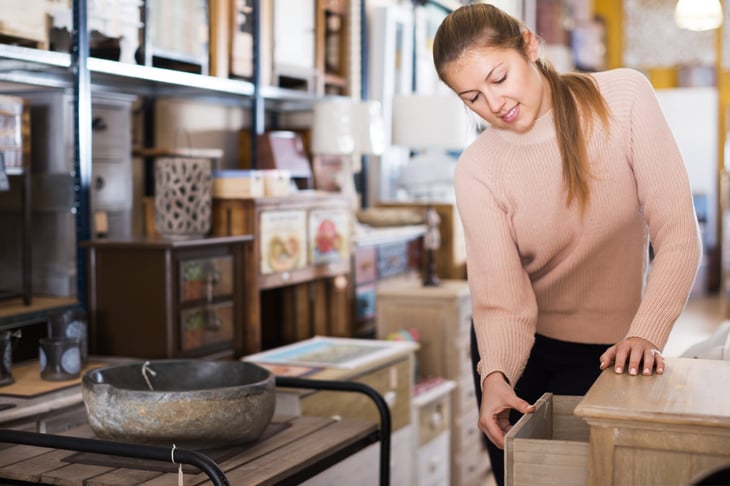
Thrift stores inspire the DIYer in all of us. Refinishing tables, rewiring lamps, making a cool mosaic from vintage dinnerware — the creative possibilities are endless. But shoppers beware: It’s easy to amass a houseful of to-do’s that never get done.
Avoid project creep by knowing the limits of your skills. Your significant other (and your garage) will thank you.
7. Shopping with disinterested friends

As much as I love thrift shopping, I learned a long time ago that it’s not everyone’s cup of tea. Some people are put off by the disorder of thrift stores or can’t shake the “ick” factor of buying used.
If your friends aren’t into the secondhand scene, don’t force it. Instead, split up for a few hours, shop your favorite spots distraction-free and compare notes later over coffee. Trust me. Everyone will have a much better time.
8. Getting ‘thrift-drunk’

What happens when inexperienced thrift shoppers mix the thrill of discovery with cheap prices? They get a little “thrift-drunk.”
Thrift-drunk is my tongue-in-cheek term for people’s tendency to overbuy when faced with a store full of bargains.
Avoid this level of intoxication, or you’ll soon be renting storage space all over town. Remember, it’s only a bargain if you truly need it, will definitely use it or can sell it for a profit.
9. Getting too competitive

Thrift shops can be competitive places. After all, when you miss out on an amazing find by mere seconds, there’s not a stack of 20 more in the stockroom.
But good-natured competition doesn’t involve racing around the store, using your cart as a battering ram and participating in shoving matches (yes, I’ve seen all these aggressive behaviors to one degree or another while thrift shopping).
Take it easy. Life is competitive enough. Remember, a bargain really isn’t a bargain if you have to hire an attorney to deal with the aftermath.
10. Not going often enough

Some of my thrift-shopping friends hit the stores every day, and a few overachievers shop the same store multiple times a day.
For most, that level of commitment isn’t possible. But shopping regularly is a smart strategy; fresh inventory comes in daily and shelves are restocked throughout the day. Persistence and consistency are key to finding the best items first.
11. Ignoring the clear glass section
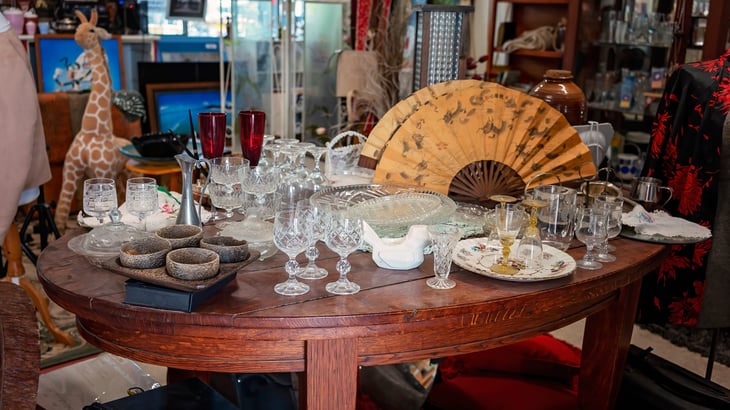
For shoppers stocked up on tumblers and stemware, the clear glass section of thrift stores usually holds little interest. But if you’re shopping to resell, skipping this section could be a mistake.
The market for traditional fine crystal is shrinking, but a few makers still command impressive resale prices. Keep an eye out for glass and crystal pieces by Iittala, Blenko and Steuben. And vintage Flameware glass coffee percolators are always popular with buyers.
12. Not shopping for basics

Many secondhand shoppers focus only on the unique items thrift stores have to offer. But don’t forget about the basics.
Pair that one-of-a-kind leather jacket with a classic T-shirt and jeans. Build a striking collection of hand-thrown pottery bowls, then pair them with a set standard white plates and simple cloth napkins.
13. Buying secondhand ‘fast fashion’
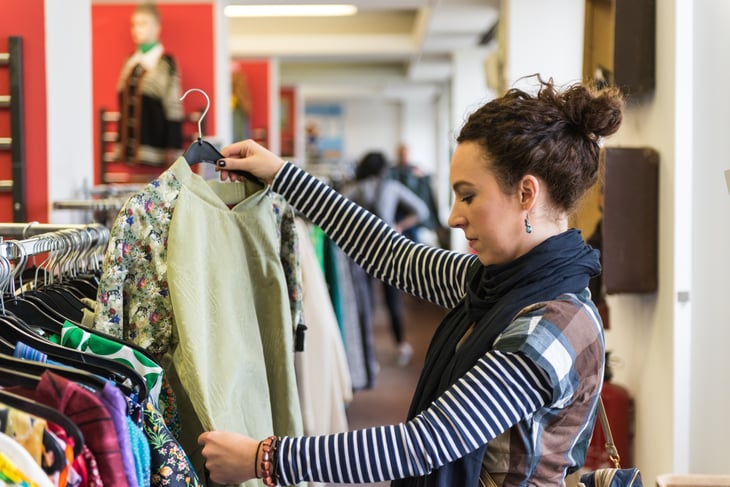
“Fast fashion” refers to the industries that produce large quantities of low-quality clothing in response to fleeting fashion trends. These low-priced clothes are designed to last only one season (or less) before being tossed out.
At every stage of production, fast fashion takes a toll on our environment. According to Oxfam, the textile industry now produces more greenhouse gas emissions than the aviation and shipping industries combined. Check out “11 Secrets To Finding Quality Clothing at Thrift Shops.”
Since it’s made to throw away, fast fashion isn’t a bargain — even at thrift store prices.
14. Skipping the ‘sniff test’

That secondhand sweatshirt may look great, but how does it smell? Between heavy detergents, fabric softeners, and scent-booster beads, used clothing and linens can end up smelling like a bag of cheap potpourri.
The same goes for furniture and home decor. Fragrances from room spray, candles, scent sticks and plug-ins seep into fabric and wood — sometimes permanently altering how they smell. If you’re the least bit sensitive to artificial fragrances, sniff before you buy.
15. Not trying clothes on
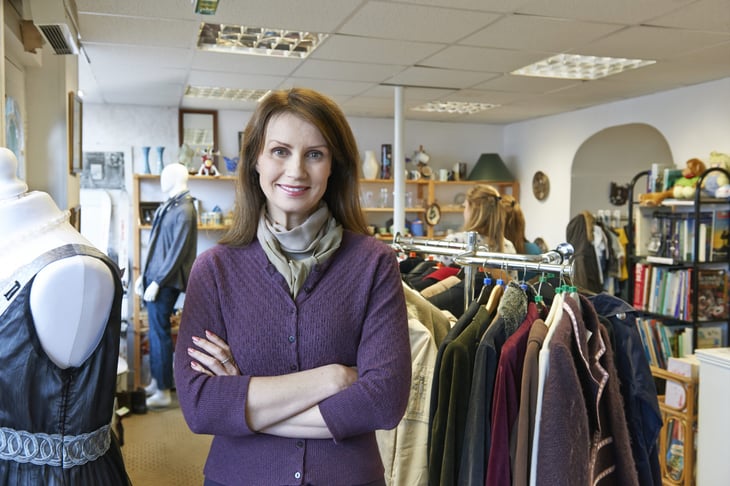
Found a piece of clothing you love, but not sure about the size? Try it on! Clothing sizes have changed radically over the years. Yesterday’s large is today’s medium or small.
And remember, labels can lie. Many thrift shop fashions have been altered by previous owners. When in doubt, ignore the tag and try it on.





Add a Comment
Our Policy: We welcome relevant and respectful comments in order to foster healthy and informative discussions. All other comments may be removed. Comments with links are automatically held for moderation.